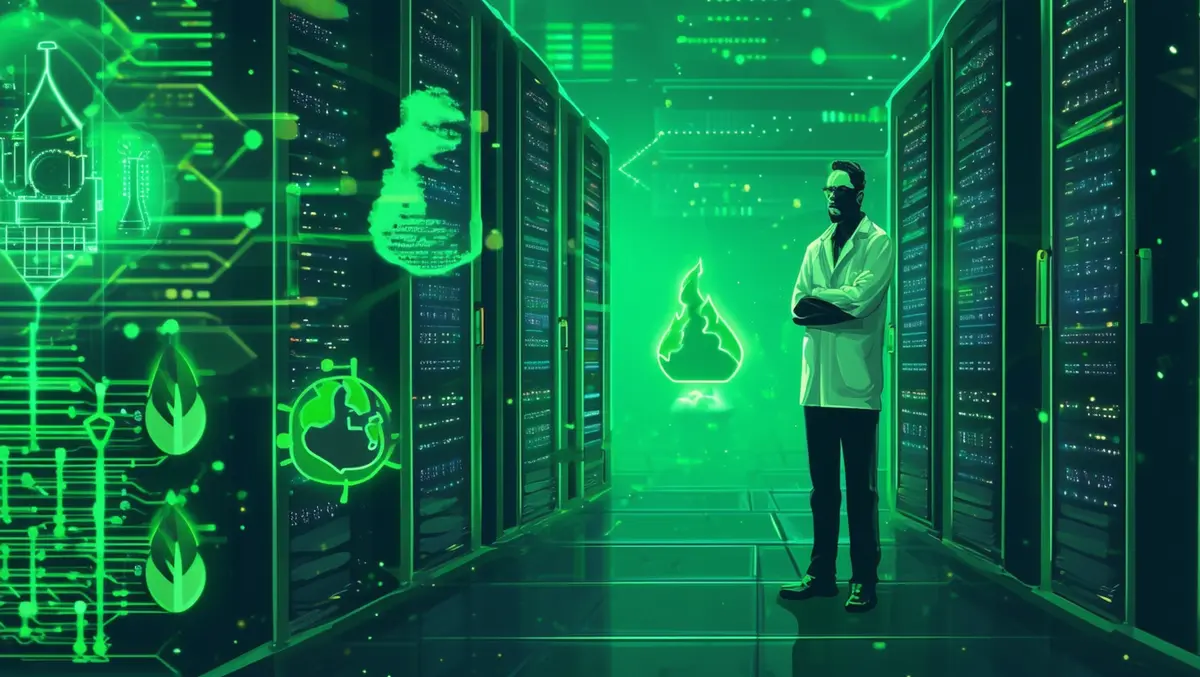
Gen AI threatens global decarbonisation efforts, says SAS
The rapid adoption of data-intensive technologies such as Generative AI (GenAI) poses a significant threat to global decarbonisation initiatives unless organisations take greater responsibility for their cloud and data practices, according to a report by data and AI company SAS.
Senior decision-makers in large organisations face the dual challenge of harnessing data and AI at scale while urgently needing to reduce carbon emissions. This is creating a complex scenario as leaders navigate ethical, commercial, and regulatory requirements to combat climate change. To underscore the extent of this challenge, official figures indicate that data centres in Ireland consumed more electricity last year than all of the country’s urban homes combined.
Jerry Williams, Chief Environmental Officer at SAS, commented, "Organisations often think that environmental responsibility is primarily a cloud vendor obligation, but the truth is, it's a shared responsibility. Greater efficiency in AI model development, made possible by the availability of data and AI platforms optimised to run in the cloud, will also help teams to reduce unnecessary duplication and waste, and minimise energy consumption."
The report highlights the environmental impacts of data consumption and offers a detailed look at how cloud computing, while providing operational efficiencies, significantly contributes to carbon emissions. Innovations in data centre design and management by cloud hyperscalers like AWS, Microsoft Azure, and Google Cloud Platform are making strides in sustainability. However, the responsibility for environmental stewardship also falls on the organisations utilising these services.
Spiros Potamitis, Senior Data Scientist at SAS, explained, "If you reduce the time needed to run analytical workloads, it will also have the added benefit of significantly reducing your carbon emissions. Independent research has found that the SAS Viya platform is, on average, 30 times faster than commercial and open-source alternatives. This means an organisation using Viya could cut up to 50 tons of CO2e from their footprint over five years."
Yves Mulkers, Data Strategist at 7wData, stressed the importance of optimising IT infrastructure to reduce energy consumption. "Organisations can make significant strides in sustainability by focusing on virtualisation, using AI to manage data, and refining large language models. Partnering with innovators who share these values is crucial," said Mulkers.
Luke Davies, Managing Director of Datacenters at GlobalConnect, pointed to advancements in data centre design, such as improved cooling techniques and the reuse of excess heat in local district heating systems, as key strategies to reduce energy consumption. "We have seen flagship efforts to decarbonise data centres, such as our project to redirect heat to provide free energy for 1,500 households in Greater Copenhagen," noted Davies.
The rise of GenAI adds another layer of complexity to the sustainability challenge. Reports have indicated that models like ChatGPT-3 consume substantial resources, with even greater demands from ChatGPT-4. Given that data centres are resource-intensive, both directly in terms of energy and water consumption and indirectly through construction and equipment use, experts agree that the tech industry must innovate to meet sustainability demands.
Potamitis emphasised the necessity for organisations to employ monitoring tools to grasp their usage, build holistic ESG dashboards, and partner with sustainable software and cloud vendors. "It's about making small, incremental changes that collectively have a significant impact. Even small improvements in cloud usage can make a big difference when considering the cumulative impact," he said.
The SAS report also highlights inefficiencies caused by cloud proliferation. Research from SAS found that cloud and analytics sprawl is affecting 99% of large organisations, leading to increased infrastructure, storage, and processing costs, as well as a hidden environmental impact. Therefore, optimising cloud environments is crucial for reducing both financial costs and carbon emissions.
As the demand for AI and advanced analytics continues to grow, the industry faces the challenge of balancing innovation with sustainability. The tech sector is responding with innovations in data centre management and more efficient algorithms. For instance, Microsoft claims that using Azure is up to 93% more energy-efficient than traditional enterprise data centres.
"The urgency of climate change, public pressure, and new regulations mean that businesses are increasingly prioritising sustainability when choosing providers," added Davies. "Without data centres, there will be no AI, so there's a structural incentive to make them as efficient as possible."
The SAS report underscores the need for organisations to evaluate their cloud strategies, optimise their IT infrastructure, and adopt sustainable practices. As Potamitis concluded, "Given the urgency of climate change, organisations must go all in, hosting data with responsible service providers and continuously optimising their resources to reduce their emissions footprint."


